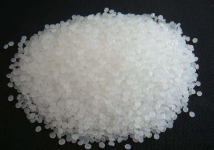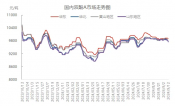read: 862 time:2025-07-10 12:58:09 from:化易天下
As a common organic compound, toluene exhibits special reactivity in the electrophilic substitution reaction of aromatic hydrocarbons. When discussing the question of 'why toluene is ortho and para directing', we need to gain a deeper understanding of the molecular structure of toluene and its impact on electrophilic substitution reactions. The following article will analyze in detail why toluene has the characteristics of ortho - and para orientation
The molecule of toluene consists of a benzene ring and a methyl (- CH3) group. Methyl is an electron donor group that pushes electron density towards the benzene ring through hyperconjugation and induction effects. These effects increase the electron density on the benzene ring, thereby enhancing the affinity for electrophilic reagents. This is the fundamental reason why toluene exhibits ortho - and para orientation in electrophilic substitution reactions
The electron donor effect of the methyl group is crucial in the question of 'why tolle is ortho and para directing'. Methyl transfers electron density to the aromatic ring through the hyperconjugation effect, where the C-H bond of the methyl group interacts with the π electron cloud of the benzene ring. Due to the increase in electron density, the reactivity of aromatic rings in both ortho and para positions is enhanced. Therefore, electrophilic reagents tend to attack ortho and para positions rather than meta positions
The increase in electron density at the ortho and para positions of the aromatic ring significantly enhances the reactivity of these positions. The ortho and para positions of toluene are more prone to substitution reactions compared to other positions of benzene, resulting in the formation of ortho and para substitution products. This directional effect is very significant in electrophilic substitution reactions and is also one of the important reasons why toluene is widely used in organic synthesis
Further analysis of "why toluene is ortho and para directing" reveals that the ortho - and para orientation of toluene is also related to the stability of intermediates formed in substitution reactions. When the electrophilic reagent attacks the benzene ring, a carbocation intermediate (σ - complex or carbocation intermediate) is formed. The electron donor effect of methyl can stabilize these intermediates, especially in the ortho and para positions
Adjacent and para oriented intermediates are stabilized through resonance effects, while in the meta position, due to the inability to form a sufficiently stable resonance structure, it is not conducive to the occurrence of substitution reactions. This is why toluene preferentially generates ortho - and para products
The reason why toluene is ortho and para directing can be attributed to the electron donor effect of methyl groups and the stability of the resulting intermediates. The methyl group increases the electron density at the ortho and para positions through hyperconjugation and induction effects, promoting electrophilic substitution reactions at these positions. The intermediates formed by ortho and para positions are more stable due to resonance stability, further enhancing this directional effect. These characteristics significantly enhance the reactivity of toluene in organic synthesis and have important guiding significance in designing synthetic routes for aromatic compounds

Jincheng Petrochemical's 300000 ton polypropylene plant successfully trial production, 2024 polypropylene market analysis

The ABS market remains sluggish, what is the future direction?

Market differentiation of bisphenol A intensifies: prices rise in East China, while prices generally decline in other regions

The production method and process flow of silicone acrylic lotion, and what are the common raw materials